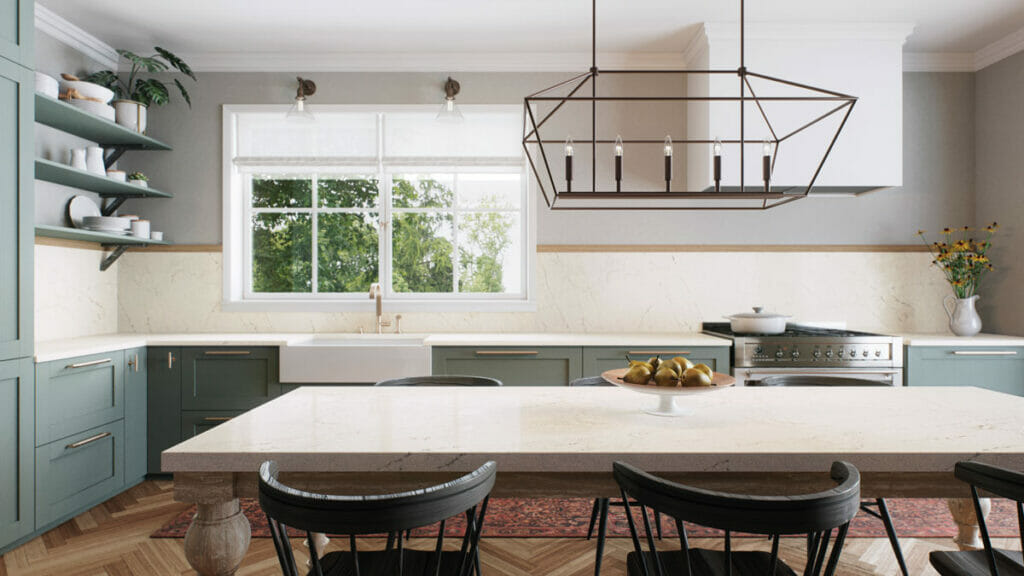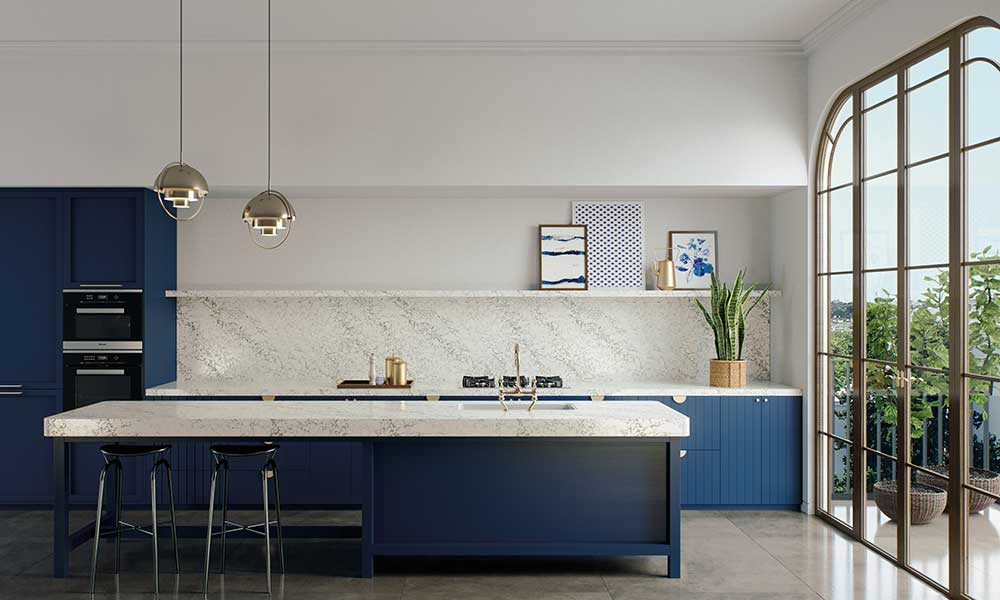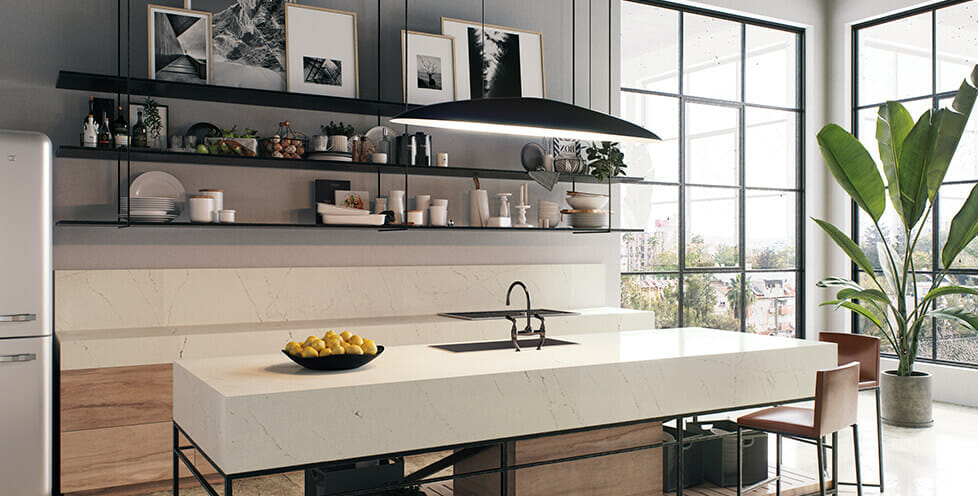Kitchen Countertops: How to Remove Old Granite Countertops
6 min read
Kitchen remodeling is an effective way to uplift your house’s look and value. Among the most common areas of interest is the countertop.
Replacing an old granite countertop with a more versatile and beautiful material like quartz can instantly upgrade the look of your kitchen. While some granite slabs have higher price tags than quartz, the latter offers more benefits.
For instance, quartz material is almost indestructible and bacteria-free as it is non-porous–unlike granite countertops. However, before installing the new quartz countertop, you must remove the old granite slab carefully.
While some other countertop materials like laminate might be easy to DIY, removing granite slabs and installing quartz require high levels of expertise, tools, and technical skills. It is recommended that you seek the services of an expert to make the entire process a success.
This guide will explain how to remove countertop granite slabs as safely and easily as possible.

Essential Tools Required when Removing a Granite Countertop
Removing granite countertop slabs requires some special tools to ensure a smooth process. These include:
With these tools, you can now start the following removal process:
Pre-countertop Removal Steps: Remove All Items, Fixtures, and Disconnect All Lines
This is the first and most important step when removing kitchen countertops. It involves clearing everything from the drawers, cabinets, and countertop. Clearing the area helps avoid any destruction of items and fixtures during the removal process.
How to remove granite countertop slabs:
Start by shutting off the water valve beneath the sink faucet to avoid water spillage during the process. You should also shut off both the cold and hot water valves by turning them clockwise until the water stops running. Finally, disengage the water lines above the valves by turning the nut counterclockwise using pliers or a wrench.
First, trace the disconnected water lines to your sink’s bottom. Then turn the hold-down nuts counterclockwise to detach, using pliers. Push the faucets upwards from the rim to remove them.
Find the hold-down brackets located inside the cabinet around the tub’s base. Unscrew the nuts on each bracket and remove them. Finally, use a knife or a flat chisel to break the caulk sealing the sink to the granite countertop, and pull out the sink. This primarily applies to under-mount sinks.
For drop-in fixture sinks, all you need is to use a chisel or a putty knife to break through the adhesive layer holding the sink to the countertop. However, it’s good to have someone assist you with this step to avoid damages.
On the bottom side of your kitchen granite countertop, there is a layer of plywood between the cabinets and the granite. To remove it, loosen the screws located inside the cabinet, connecting the plywood sheet and the cabinet. Use a drill and a screw tip.
Also, check for another set of screws running up into the plywood from the top of the cabinet. If there are none, break the adhesive that connects the plywood to the granite countertop to remove the plywood.
Using a hammer and a leveled pry bar, it’s now time to remove the backsplash connecting to the countertop. Starting at the topmost edge of the backsplash, lightly strike your pry bar using the hammer to remove the backsplash step by step. Continue doing this until you remove all the backsplash connected to the countertop.

Removing the Countertop
After completing all the pre-removal steps, it’s now time to undertake the main task –removing the granite countertop. These steps will help you in removing the countertop hassle-free.
After this, insert the pry bar into this joint by hitting it gently with your hammer. Turn gently to break the glue or adhesive connecting the two.
Tapping a wooden shim between the countertop and the cabinet’s edge will help to hold the granite countertop at the desired spot. Continue screwing and shimming from the front side of the cabinet until you can slowly lift the entire front frame.
Continue the process until the entire slab is raised. Be gentle to avoid breaking the granite countertop.
Work simultaneously to slowly tilt your countertop from the back edge, dropping it into your hands. From here, you can now carefully transfer the granite countertop to where you want it stored.
With these simple steps, you can remove granite countertop slabs without causing any damage. However, we always advise customers to seek the services of an expert.

Why Replace a Granite Countertop with a Quartz One?
Granite countertops are made from 100% naturally mined stone, milled and polished to develop these beautiful slabs. Though it has the appearance of stone, quartz is not 100% natural. Instead, it’s around 90% natural stone, combined with 10% polymer resins.
So, how does this 90% natural store outrank the 100% natural one? Here are several benefits of using quartz countertops compared to granite ones.
Unlike granite slabs which are all-natural, quartz slabs are altered to create a more uniform and classic look. For a more even and consistent look, quartz offers the best solution.
Quartz slabs come in multiple colors, allowing you to choose the one that best suits your style and matches your interior.
Once installed, quartz countertops require minimal maintenance to keep them in perfect condition. If the slab does somehow chip, it’s easy to replace the broken part due to high uniformity.
Although granite is durable, quartz outranks it. It’s harder and resists most scratches with greater ease.
Since it’s available in almost any color, quartz can be made to mimic various stones, including marble and granite. This allows you to have the look you want with the convenience of an ultra durable material.
Since quartz is a non-porous material, it’s bacteria-free. This is unlike granite, which is porous and encourages bacterial growth. The non-porous quality makes it the best material for your kitchen countertops.
{{ subtitle }}
{{ i.desc }}
{{ subtitle }}
{{ subtitle }}